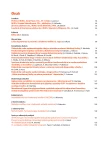Pathophysiological aspects of diabetic foot syndrome
Authors:
B. Krahulec 1,2; L. Štrbová 1,2
Authors‘ workplace:
II. interná klinika Lekárskej fakulty Univerzity Komenského a Univerzitná nemocnica Bratislava, Nemocnica Staré Mesto, prednosta doc. MUDr. Ľudovít Gašpar, CSc.
1; Katedra diabetológie, porúch látkovej premeny a výživy Lekárskej fakulty Slovenskej zdravotníckej univerzity, Bratislava, vedúci katedry doc. MUDr. Boris Krahulec, CSc.
2
Published in:
Forum Diab 2013; 2(2): 84-89
Category:
Overview
Diabetic foot syndrome is a serious complication of the underlying disease diabetes mellitus. It is defined as ulceration or destruction of tissues distal to the ankle complicated under adverse circumstances with infection or gangrene and lead to undesirable limb amputation. In etiopathogenesis is present neuropathy, as the main factor almost in each case and limb ischemia. A very important factor is deformity of the foot, based on arthropathy, cheiroartropathy or changes on the amputation stump. Considerable are changes affecting microcirculation as well. Biomechanical stress and trauma are also significant, often underestimated adverse factors in daily practice. It is important to search vulnerable diabetic foot in daily practice and educate patients or their relatives.
Key words:
diabetic foot syndrome – etiopathogenesis – risk factors
Sources
1. American Diabetes Association: Clinical practice recommendations 2011. Diabetes Care 2011; 34(Suppl 1): S1-S98.
2. Boulton AJM, Cavanagh PR, Rayman G. The Foot in Diabetes. Chicester: Wiley 2006.
3. Cavanagh PR, Ulbrecht JS. Biomechanical aspects of foot problems in diabetes. In: Boulton, AJM, Connor H, Cavanagh PR (eds). The foot in diabetes. Chichester: Wiley 1994.
4. Edmonds ME, Foster AVM. Managing the diabetic foot. Blackwell Publ: Oxford 2005.
5. Greenman RL, Khaodhiar L, Lima C et al. Foot small muscle atrophy is present before the detection of clinical neuropathy. Diabetes Care 2005; 28(6): 1425–1430.
6. Bakker K, Apelqvist J, Schaper NC (eds). International Working Group on Diabetic Foot Editorial Board. Practical guidelines on the management and prevention of the diabetic foot 2011. Diabetes Metab Res Rev 2012; 28(Suppl 1): 225–231.
7. Schaper NC. Diabetic foot ulcer classification system for research purposes: a progress report on criteria for including patients in research studies. Diabetes Metab Res Rev 2004; 20(Suppl 1):S90–95.
8. Jirkovská A et al. Syndrom diabetické nohy. Maxdorf: Praha 2006.
9. Jirkovská A, Bém R et al. Praktická podiatrie. Maxdorf : Praha 2011.
10. Krahulec B, Gašpar Ľ, Štvrtinová V et al. Manažment pacienta so syndrómom diabetickej nohy. Veda: Bratislava 2013 (v tlači).
11. Krahulec B, Kučera P, Kurča E et al. Diabetická polyneuropatia II. Vybrané komplikácie diabetickej neuropatie. Arimes: Bratislava 2003.
12. Krahulec B, Štrbová L. Diabetická noha. In: Štvrtinová V et al (ed). Choroby ciev. SAP: Bratislava 2008 : 338–356.
13. Krahulec B, Žúži M, Vozár J et al (eds). Diabetická polyneuropatia, súčasné diagnostické a terapeutické možnosti. Lufema: Bratislava 1999.
14. NICE National Collaborating Centre for Primary Care. Type 2 Diabetes. Prevention and Management of Foot Problems. National Institute for Clinical Excellence: London 2004. ISBN: 1–84257–500–7. Dostupné z WWW: <http://www.nice.org.uk/CGO10NICE>
15. Rogers LC, Frykberg RG, Armstrong DG et al. The Charcot foot in diabetes. Diabetes Care 2011; 34(9): 2123–2129.
16. Rosenbloom AL, Silverstei, JH, Lezotte DC et al. Limited joint mobility in childhood diabetes mellitus indicates increased risk for microvascular disease. N Engl J Med 1981; 305(4): 191–194.
17. Uccioli L. The diabetic foot. In: Boulton AJM (ed). Diabetic neuropathy. Aventis Pharma 2001 : 196–235.
18. Vestník MZ SR 2011 : 356–369.
19. Veves A, Giurini JM, LoGerfo FW (eds). The Diabetic Foot. Humana Press: Totowa, New Jersey 2006.
20. Ziegler D. Diabetic peripheral neuropathy. In: Ritz E (ed). Diabetes and cardiovascular risk. Aventis Pharma: Bridgewater 2002 : 244–287.
21. Zimny S, Schatz H, Pfohl M. The role of limited joint mobility in diabetic patients with an at-risk foot. Diabetes Care 2004; 27(4): 942–946.
Labels
Diabetology Endocrinology Internal medicineArticle was published in
Forum Diabetologicum

2013 Issue 2
Most read in this issue
- Diabetic neuropathy: clinical features and contemporary possibilities of diagnostics and treatment
- Management of hypertriacylglycerolaemia from the point view of newest guidelines of The Endocrine Society
- Diabetic nephropathy: epidemiology and diagnosis
- Pathophysiological aspects of diabetic foot syndrome
